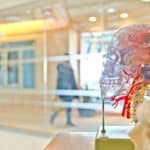There are three broad stages in human learning.
Humans, unlike almost all other creatures, are slow in developing the capacity to learn appropriate to their environs. Most creatures come into life pre-wired with almost all they need to survive and thrive — humans have a greater need, and a greater capacity to learn, but they are not completely pre-wired — they need to learn how to learn.
The first stage is so elementary that it was not even identified until the last half-century. It is called “patterning”. It occurs when babies first start to explore their environment by crawling and otherwise controlling their bodies in exploring the outside world. This “motor learning” seems so natural, that it is commonly not considered “learning”, but for whatever reason, some children miss developing important aspects of this development, so they are restricted in benefiting from the more advanced aspects of learning capacity.
Once this problem was identified, Glenn Doman and Carl Delacato created a program of exercises to formally replace the “motor learning” that had been missed as infants. It may seem strange for adolescents and adults to be coached in crawling and other infantile behaviors, but there is no other remedy for those who missed “patterning” naturally.
The second stage begins the process of formal learning.
After four or five years of the most basic learning, the next eight to ten years of formal learning are devoted to the learned competencies that deemed essential for every citizen — socialization, reading comprehension, math calculation skills, rudimentary science, and introduction to the arts — a common curriculum for all. As with any curriculum, minimal assumptions are made about the students’ development; by and large these assumptions are met and learning progresses without major problems, but in a significant number of cases the students have not developed the perquisites for learning — when this occurs, the most effective remedy is to focus directly on developing the abilities and perceptual skills that the student is missing.
That is where SOI-IPP fits into the total learning process — it fills in the prerequisite gaps in formal learning — and thereby prepares the failing student to successfully reenter formal learning. So, SOI-IPP does not teach the content of the curriculum, it trains the intellectual abilities and perceptual skills thus enabling the student to meet the assumed learning capabilities of formal instruction.
Unless these intellectual abilities and perceptual skills are corrected, the student is handicapped for life — but, unlike physical handicaps, learning handicaps are not obvious, even to most veteran teachers. The effects of the handicaps are obvious — poor performance — but the causes of the poor performance persist below the surface. It requires a separate, clinical approach to find and treat the causes of the problems. SOI-IPP is that clinical resource — adjacent to the schoolroom — it serves as the ER for learning failures.
Level three in human learning is specialization.
Beyond the second stage general competencies, the focus of formal education and training is on specialization — preparation for the myriad types of workforce and professional careers.
Even at this level there is some need for SOI-IPP intervention. Specialization training is more intense and compressed than high school, leaving less time for students who had heretofore compensated for learning deficiencies by devoting more time and commitment to study than the average student. This extra-effort option is very often foreclosed by the intensity of specialization. When this happens, SOI-IPP clinics offer a means of gaining the competencies demanded by higher-level instruction.
In all three levels of education there is a common thread — if a student does not have the repertoire of learning competencies that the training is expecting, the student will likely not succeed. At that point they need a clinical intervention to diagnose the problem and provide the remedy. That is the essence of SOI-IPP.
written by: Dr. Robert Meeker, president of SOI Systems






